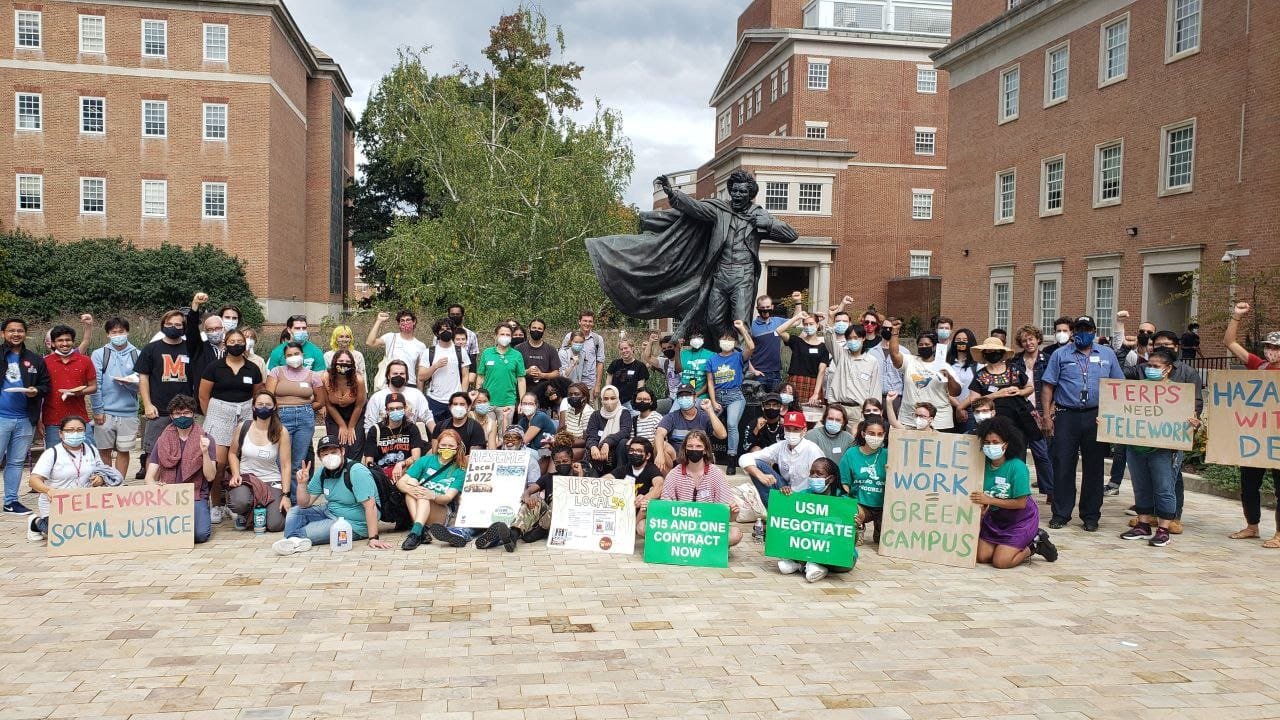First published Feb 26, 2021 in Stories Beneath the Shell.
by Jon Meltzer
Despite the adoption of new programs to increase the number of Black faculty, the University of Maryland is failing to truly represent county and state demographics, campus labor leaders say.
“The University of Maryland’s upper administration have a long history of [being] more interested in… making sure the university looks a certain way, as opposed to getting their hands dirty and actually fixing things,” said Solomon Comissiong, the president of the university’s Black Faculty and Staff Association.
According to the university system’s Diversity and Inclusion Dashboard, 10.9% of faculty at UMD’s campus belong to “underrepresented minority groups,” which include Black, Hispanic, Native American and Native Hawaiian professors.
As of the 2020 U.S. census, Maryland’s population is about 30% Black and Prince George’s County’s is about 64% Black.
Comissiong, who is also the assistant director for student involvement and public relations at the Nyumburu Cultural Center, said the university does an “abysmal” job at advancing its few Black professors along the tenure track.
“Years ago,” he said, “we had Black professors who were denied tenure if their research was deemed ‘too progressive’ or ‘too Black.’”
Joseph Richardson, a professor of African American studies and anthropology and member of the Black Faculty and Staff Association, is involved in efforts to amend this discrepancy.
“One of the reasons we had the Anti-Black Racism Initiative was to understand the lack of Black representation which, in many respects, is the result of structural racism,” he said.
UMD is working on increasing the number of Black professors. The Faculty Advancement at Maryland for Inclusive Learning and Excellence Program, started in May, is a $40 million initiative to bring in 100 new underrepresented faculty members over the next 10 years. Seven have been hired in the past five months, five of whom are Black.
But will that go far enough? This campus has 2,615 faculty members. 100 hires from the FAMILE program would mean Black, Hispanic, Native American and Native Hawaiian professors — “underrepresented minorities” — would make up just 14.7% of faculty. And not all these new professors would be Black .
“I don’t think this is anything different from what other universities are doing across the country,” Richardson said of the FAMILE program. He went on to say that black faculty levels at the university have fallen from 10% when he started in 2006 to just 5% today.
Richardson identified a lack of mentorship opportunities, the slow pace promotions from assistant to full professorships and a culture that doesn’t fully value and respect Black educators as reasons for the decrease in Black professors on campus.
In the face of this, UMD President Darryll Pines has greenlit many initiatives to confront race head-on. In addition to the FAMILE Program and the Anti-Black Racism Initiative, Pines also approved the Presidential Policing Commission and the 1856 Project. Richardson is cautiously optimistic about Pines’ term so far.
“He’s done a fairly decent job… but this is the first year. We have to see what that translates into,” Richardson said.
Comissiong believes that the BFSA and other labor organizations are the key to improving the quality of life not only for Black faculty and staff, but all campus workers.
“The immediate goal of the BFSA is to mobilize our members into action… if we’re all doing something in our different spaces on campus, they can’t come for all of us.”


Leave a Reply